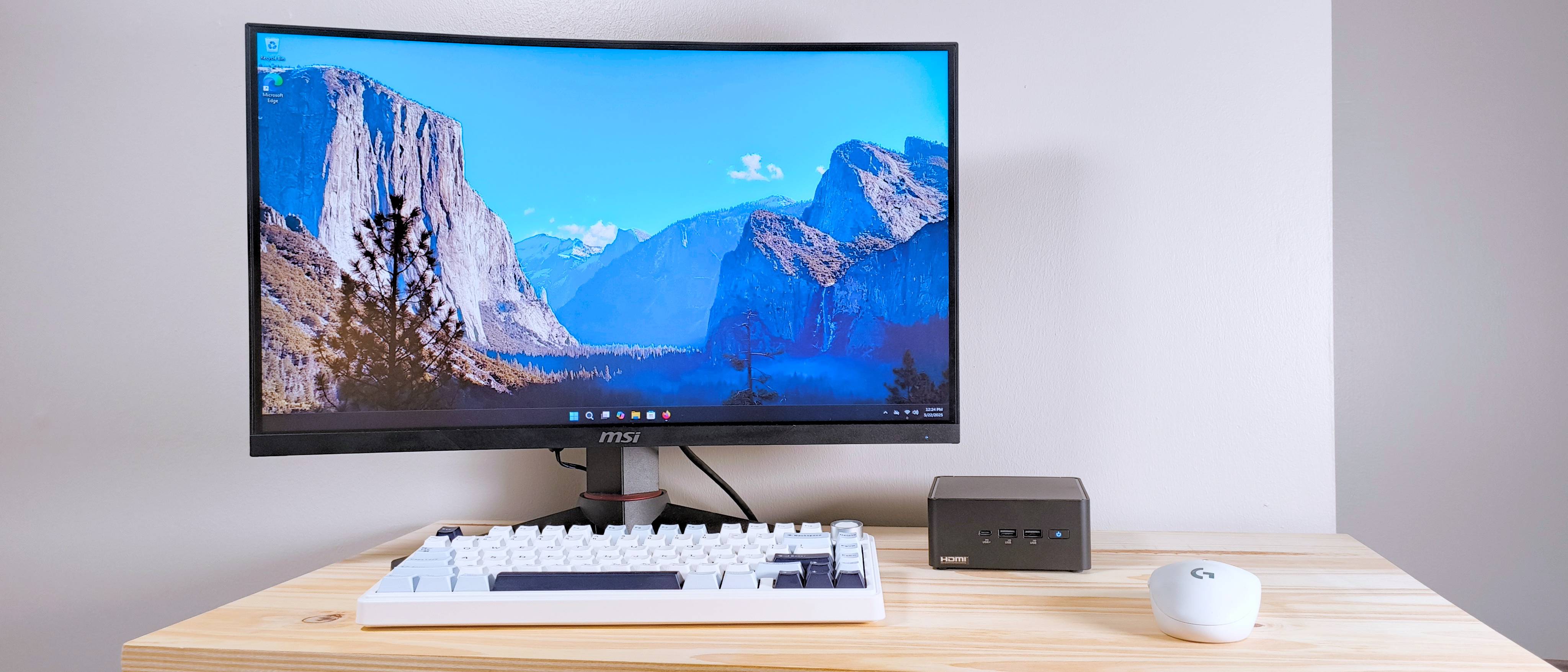Laptop Mag Verdict
The Asus NUC 14 Pro is a solid mini PC, but the Intel Core Ultra 7 155H configuration offers disappointing performance for the price, especially compared with less expensive alternatives.
Pros
- +
Plenty of ports
- +
Expandable storage and memory
- +
Supports multi-display setups
Cons
- -
Poor price-to-performance ratio
- -
Weak graphics performance
Why you can trust Laptop Mag
Can a mini PC deliver as much performance as a laptop or desktop PC in a compact form factor? Sometimes, but you have to be careful to get the right one and consider the trade-offs. The Asus NUC 14 Pro is a perfect example.
This mini PC has some advantages over a laptop, like the ability to freely upgrade or swap out your storage and memory, but it's much more compact than a regular desktop. It's far from perfect, though, especially when you factor in the price.
Mini PCs don't need to minimize performance to squeeze into a small chassis. Some can offer great value for your money, which is why you should probably take a closer look before choosing the Asus NUC 14 Pro.
Asus NUC 14 Pro: Specs and benchmarks
Price: | $999 (as reviewed), $379 (starting) |
CPU: | Intel Core Ultra 7 155H |
GPU: | Intel Arc integrated graphics |
RAM: | 16GB |
Storage: | 1TB |
Dimensions: | 4.6 x 4.41 x 2.13 inches |
Weight: | 1.32 pounds |
Click to view full benchmark test results
| Header Cell - Column 0 | Asus NUC 14 Pro (Core Ultra 155H) |
|---|---|
Geekbench 6 (Higher is better) | 9,942 |
Handbrake conversion (Lower is better) | 4:33 |
25GB File Transfer SSD speed (MBps) | 1,060 |
CrossMark: Overall (Higher is better) | 1,643 |
3DMark Fire Strike (Higher is better) | 3,899 |
3DMark Time Spy (Higher is better) | 2,311 |
Sid Meier's Civilization VI: Gathering Storm (1080p, fps) | 25.8 |
Asus NUC 14 Pro: Price and configurations
The Asus NUC 14 Pro is available in several configurations starting at $379. The base configuration is a "barebones" unit that includes an Intel Core 3 100U, but requires you to supply your own RAM and storage.
The next configuration, priced at $799, includes an Intel Core Ultra 5 125H, 16GB of RAM, and 512GB of storage. You can also choose from a Core Ultra 5 135H, a Core Ultra 7 155H, and a Core Ultra 7 165H. Additionally, you can opt for either the tall or slim chassis, with the slim model being the more expensive option.
Our review unit costs $999 and includes an Intel Core Ultra 7 155H, 16GB of RAM, and 1TB of storage.
It's worth noting that our sister site, Tom's Guide, reviewed the Asus NUC 14 Pro, as well, but tested a different configuration including the Intel Core Ultra 7 165H, 16GB of RAM, and 512GB of storage. That configuration performed significantly better on our tests, so we've included results for both configurations in this review. While the exact configuration tested in that review is currently unavailable, other configurations with the same processor are, in case you decide to go with the Core Ultra 165H model over the less powerful Core Ultra 155H.
Sign up to receive The Snapshot, a free special dispatch from Laptop Mag, in your inbox.
Asus NUC 14 Pro: Design
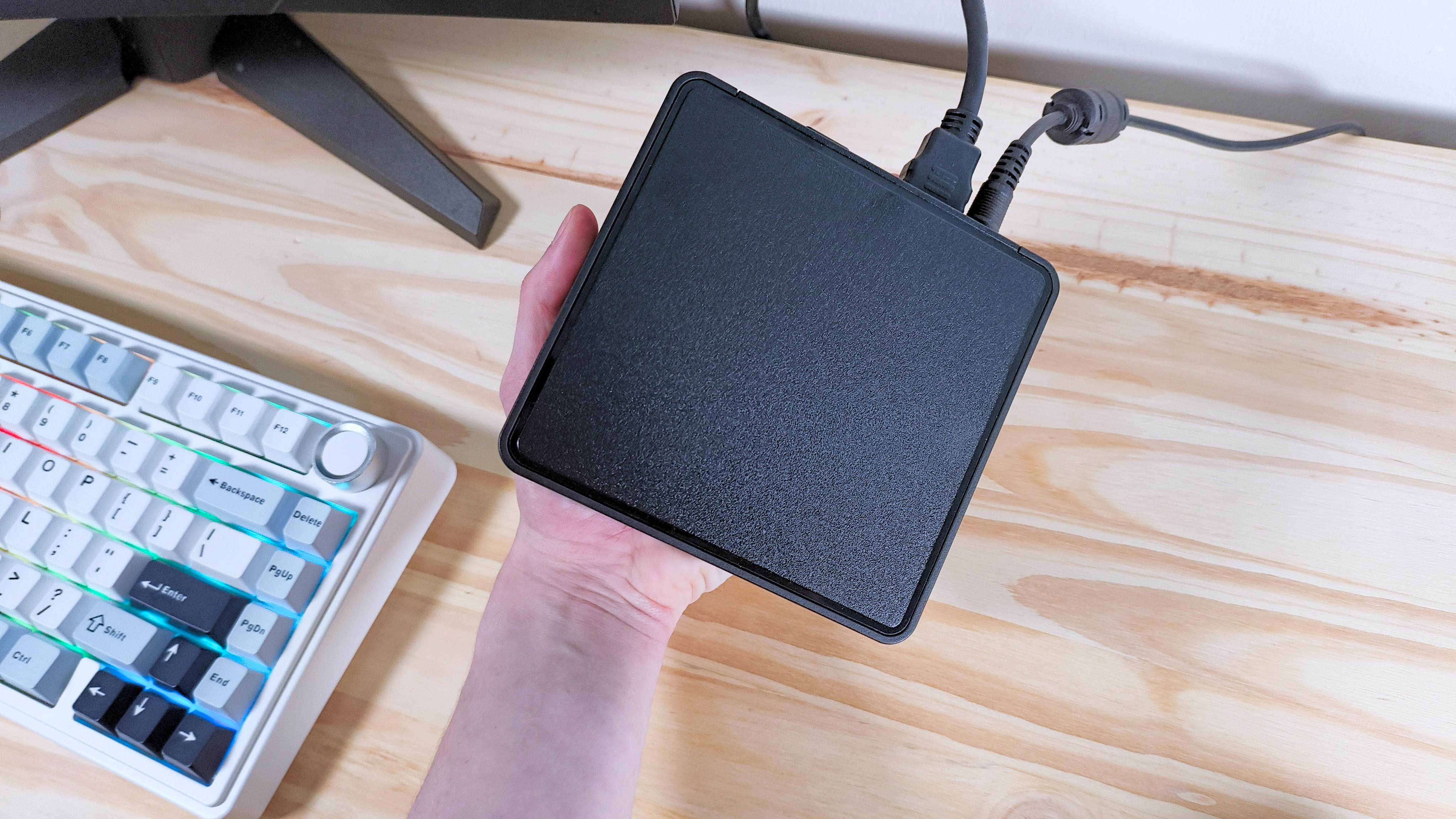
The Asus NUC 14 Pro is an ideal mini PC for bringing to the office thanks to its discrete, matte-black design. It's compact and minimalistic, perfect for anyone who wants a PC that isn't going to take up too much space or look like a distracting desk accessory.
Like most mini PCs, the NUC 14 Pro sports a cube design with a few USB ports on the front, an array of display and power ports on the back, and vents along one side. You can pop open the case from the bottom if you want to swap out any of the parts (or add your own, such as an additional SSD card). If you're used to using a laptop, this is one of the best benefits of a mini PC.
Unlike most laptops, you can usually swap out certain components in mini PCs or expand your storage. The NUC 14 Pro has two PCIe M.2 slots for SSD storage, space for an additional SSD or HDD SATA storage drive, and up to two DDR5 RAM sticks.
That means that you can add an additional M.2 SSD storage stick (assuming you get a configuration that includes storage, not the barebones model), along with a larger SATA storage drive, and you can increase your PC's memory. So, depending on your needs, you may be able to save money by choosing a configuration with less memory or storage and adding your own down the line.
Similarly, if you already have an SSD or HDD drive from another PC with data on it you want to maintain access to, you can simply add it to the NUC 14 Pro (although you will likely want to opt for the "tall" chassis option to get the most interior space).
Our configuration with the "tall" chassis is still fairly compact, small enough to pick up in one hand. It measures 4.6 x 4.41 x 2.13 inches and weighs just 1.32 pounds. Here's how that compares to a few other mini PCs:
- Geekom AX8 Pro AI: 4.61 x 4.37 x 1.52 inches, 1.23 pounds
- AceMagic F2A AI: 5.79 x 5.79 x 2.05 inches, 4.58 pounds
- Apple Mac Mini (M4, 2024): 5 x 5 x 2 inches, 1.5 pounds
Asus NUC 14 Pro: Ports
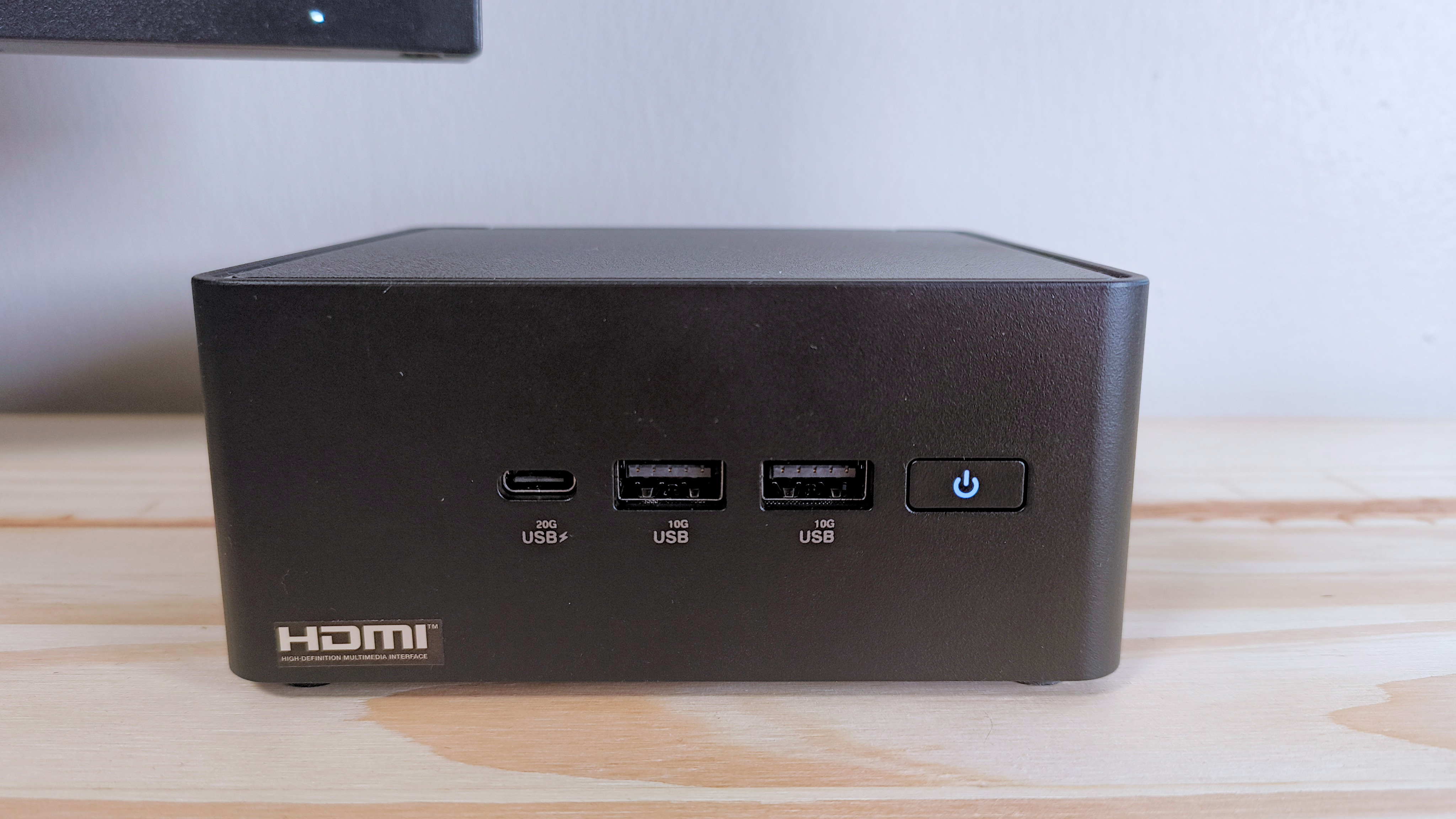
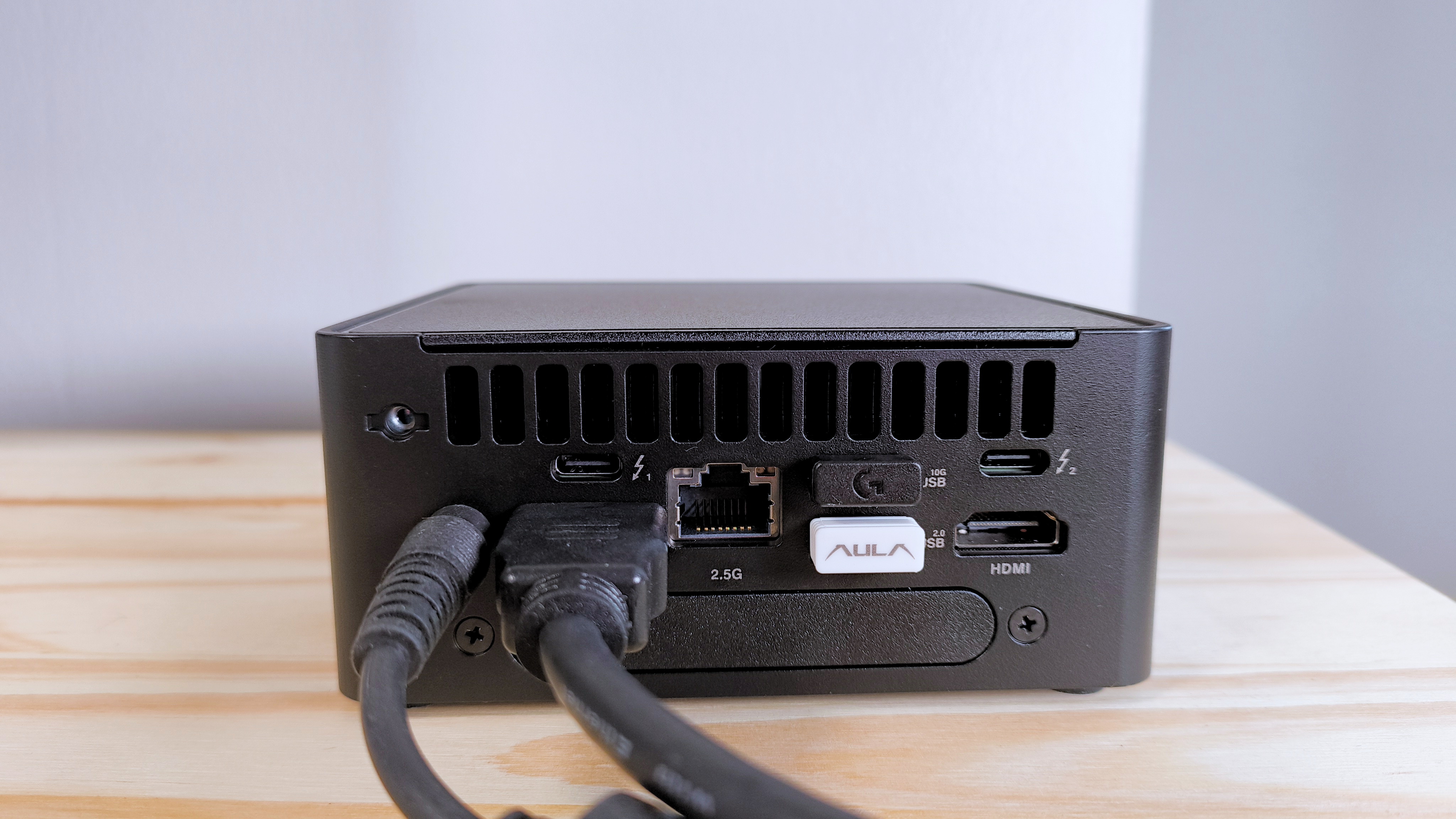
Asus didn't skimp out on the ports on the NUC 14 Pro. It offers most of the ports the average user needs, including two HDMI ports to support dual-monitor setups.
- 3x USB Type-A 3.2 Gen 2 (two on front, one on back)
- 1x USB Type-A 2.0 (back)
- 1x USB Type-C 3.2 (front)
- 2x USB Type-C Thunderbolt 4 (back)
- 2x HDMI 2.1 (back)
- 1x 2.5G Ethernet (back)
- 1x DC power (back)
Those ports were more than enough for me, although it's worth noting the NUC 14 Pro lacks DisplayPort support. Virtually all monitors have an HDMI port, as well, so that shouldn't be a problem for most users but may be a bit of a letdown for some who want the best possible performance from a high-end monitor.
Asus NUC 14 Pro: Performance and heat
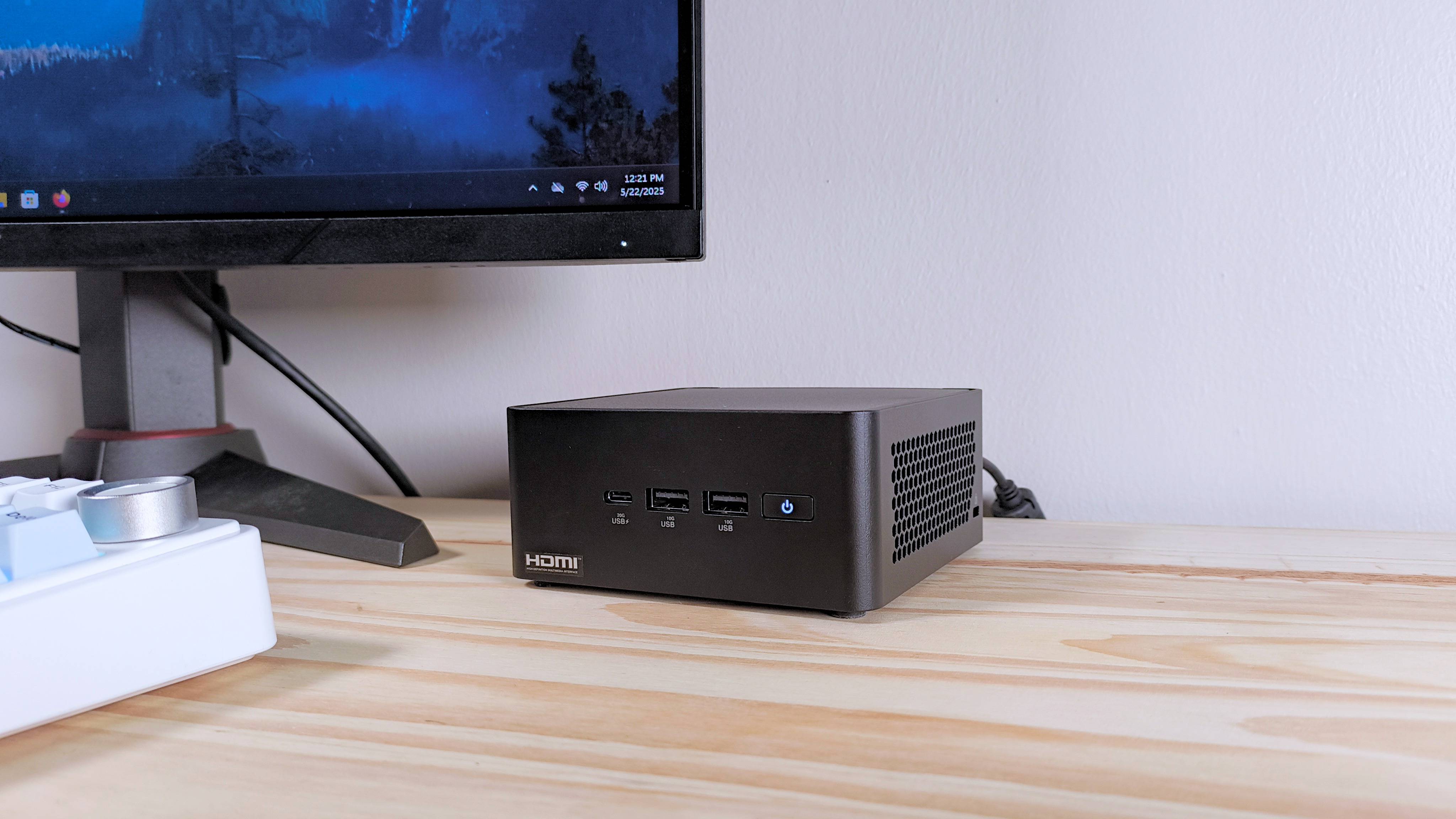
The Asus NUC 14 Pro is powered by an Intel Core Ultra 7 155H processor. While I've generally had a good experience with this CPU in laptops featuring it, the NUC 14 Pro didn't quite live up to my expectations, even compared to other mini PCs.
The NUC 14 Pro scored 9,942 on the Geekbench 6 benchmark, which is notably lower than other mini PCs at a similar price (or less). For instance, the Geekom AX8 Pro AI scored 12,972 on the same test, but costs hundreds of dollars less. Even compared to other PCs with the same Intel Core Ultra 7 155H processor, this score is low — the Acemagic F2A mini PC scored 11,170 on Geekbench 6 (and also costs over $100 less).
While you can get better performance for the price, the NUC 14 Pro may still offer enough power for some users. In my hands-on testing, it handled basic daily tasks fine, like web browsing and word processing. If you're just looking for a PC for lightweight tasks, like everyday productivity apps, this configuration will probably work just fine.
However, I'd recommend considering a different configuration if you want to go with the NUC 14 Pro. By opting for the Intel Core Ultra 7 165H configuration, you get much more bang for your buck at around the same price (potentially less if you're up for installing your own RAM and storage).
The Core Ultra 7 165H version of the Asus NUC 14 Pro performed much better, scoring 12,368 on the Geekbench 6 benchmark and outscoring the Geekom AX8 Pro and Acemagic F2A in other key performance tests. It's a major step up in terms of the performance you're getting for your money compared to the Core Ultra 7 155H configuration we reviewed.
Click to view chart data in table format.
| Header Cell - Column 0 | Asus NUC 14 Pro (155H) | Asus NUC 14 Pro (165H) | Geekom AX8 Pro | AceMagic F2A | Apple Mac Mini (M4, 2024) |
|---|---|---|---|---|---|
Geekbench 6 (Higher is better) | 9,942 | 12,368 | 12,972 | 11,170 | 14,838 |
Handbrake conversion (Lower is better) | 4:33 | 4:28 | 4:44 | 4:50 | 4:33 |
25GB File Transfer SSD speed (MBps) | 1,060 | 1,502 | 1,140 | 1,176 | Row 2 - Cell 5 |
CrossMark: Overall (Higher is better) | 1,643 | 1,723 | 1,786 | 1,697 | 2,043 |
Laptop: Gaming and graphics
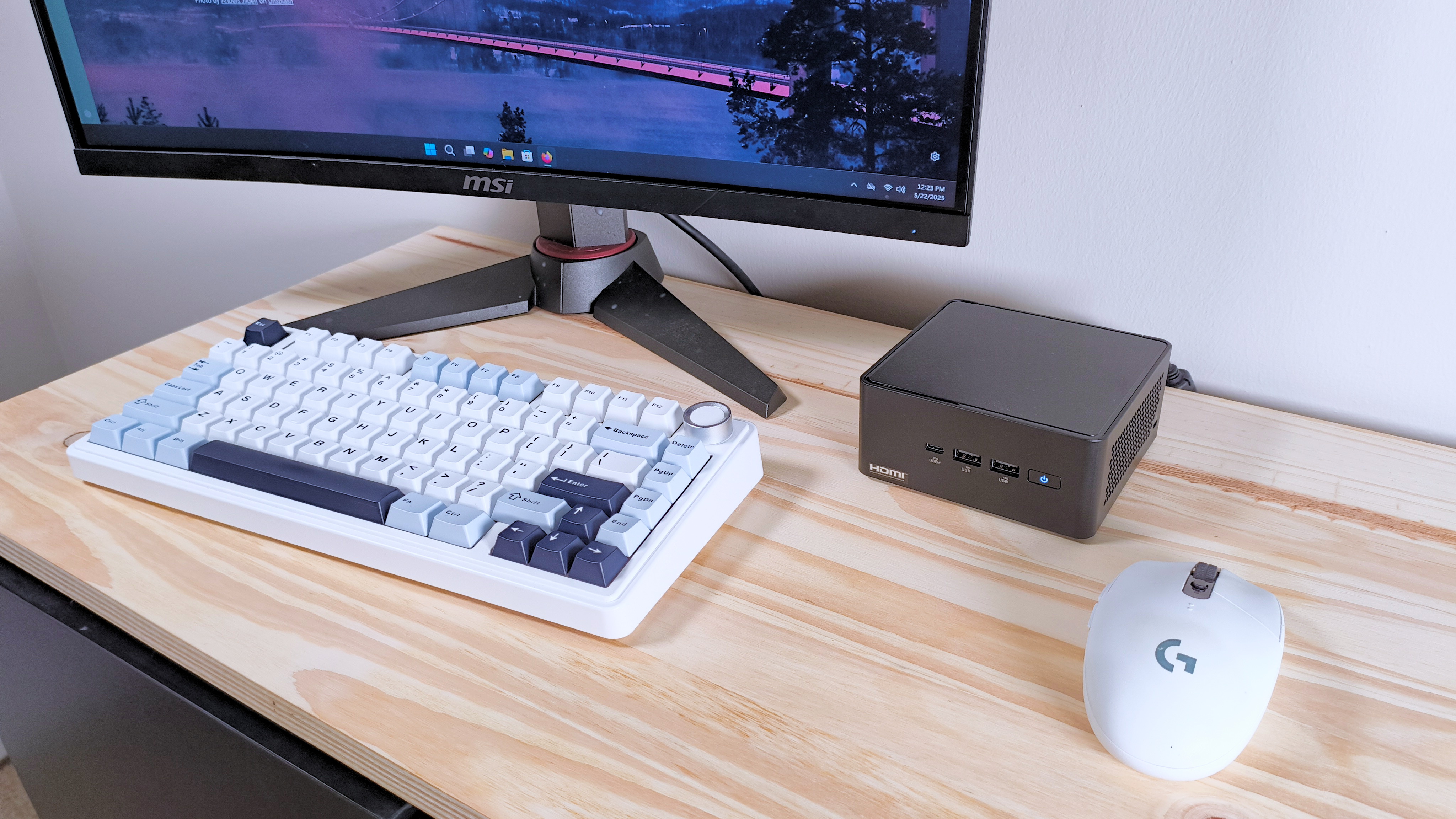
The Asus NUC 14 Pro isn't a gaming PC, so it won't come as a surprise that it relies on Intel Arc integrated graphics and does not have a discrete GPU. If you're looking for a PC specifically for gaming, you would be better served with one of the best gaming laptops or even one of the best handheld gaming PCs if you're looking for something more affordable.
With that said, you may still be able to run some lightweight, older, or indie games on the NUC 14 Pro (just don't expect RTX 5090-level performance). The NUC 14 Pro was able to run Sid Meier's Civilization VI: Gathering Storm in 1080p at just under 30 fps, which might not look ideal but will get the job done. You can always lower your graphics settings to squeeze out a few more frames.
It's worth noting, though, that other mini PCs performed a bit better in our gaming tests than the NUC 14 Pro. If you're looking for a mini PC but want to be able to do some casual gaming on the side, the Geekom AX8 Pro AI is a better choice.
It costs less and delivers significantly stronger gaming performance, averaging 58 fps in Civilization VI, nearly double what the NUC 14 Pro managed. It's still not on par with a fully-fledged gaming PC, but certainly better value for your money.
Click to view chart data in table format.
| Header Cell - Column 0 | Asus NUC 14 Pro (155H) | Asus NUC 14 Pro | Geekom AX8 Pro | AceMagic F2A | Apple Mac Mini (M4, 2024) |
|---|---|---|---|---|---|
3DMark Fire Strike (Higher is better) | 3,899 | 6,322 | 7,658 | 6,709 | Row 0 - Cell 5 |
3DMark Time Spy (Higher is better) | 2,311 | 3,264 | 3,252 | 3,357 | Row 1 - Cell 5 |
Sid Meier's Civilization VI: Gathering Storm (1080p, fps) | 25.8 | 42.8 | 58.4 | 36.5 | 52.5 |
Asus NUC 14 Pro: Software and warranty
The Asus NUC 14 Pro includes Windows 11 Home unless you purchase the barebones configuration, which doesn't include an operating system (but is compatible with Windows 11, ChromeOS, and Linux).
Assuming you get a complete configuration with Windows 11, it also includes a basic suite of apps like Microsoft Edge, Microsoft Copilot, the Xbox app, and the Microsoft Store. Asus provides a 3-year manufacturer warranty, as well.
Bottom line
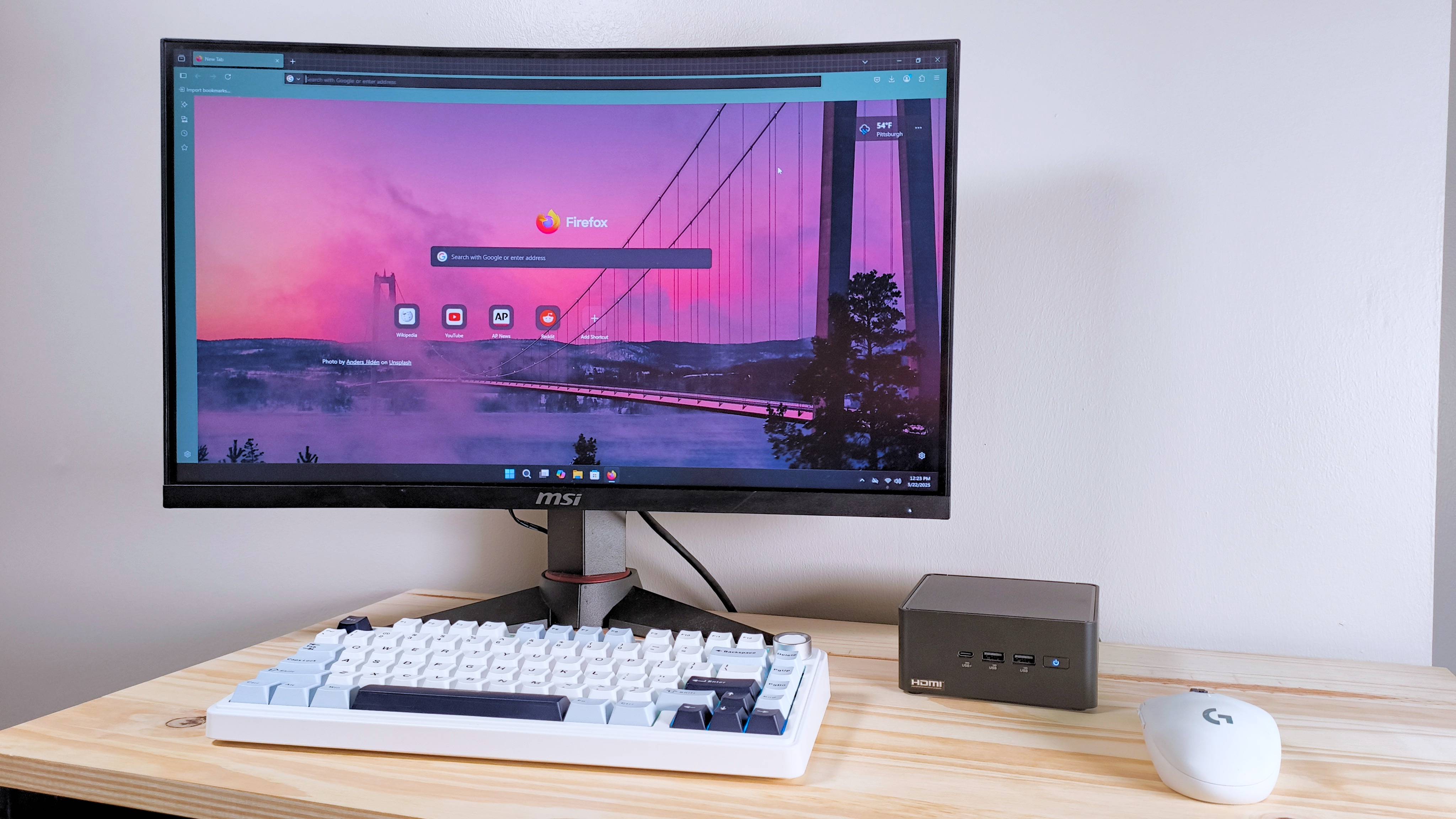
The Asus NUC 14 Pro is a solid mini PC, but delivers underwhelming performance for the price, at least for the Intel Core Ultra 7 155H configuration. At $999, it's simply not a good deal compared to other mini PCs and even other configurations of the NUC 14 Pro, namely the Intel Core Ultra 7 165H version.
If you're searching for a mini PC that offers good value for your money, the Geekom AX8 Pro AI or the Mac Mini M4 are both great options that cost hundreds of dollars less than the Asus NUC 14 Pro. Both significantly outscored the NUC 14 Pro across the board, especially in terms of graphics performance.
The Asus NUC 14 Pro may be powerful enough for casual users or basic everyday tasks, but you should probably wait until it goes on sale or choose the Intel Core Ultra 7 165H configuration instead.

Stevie Bonifield is a freelance tech journalist who has written for PC Gamer, Tom's Guide, and Laptop Mag on everything from gaming to smartwatches. Outside of writing, Stevie loves indie games, TTRPGs, and building way too many custom keyboards.
You must confirm your public display name before commenting
Please logout and then login again, you will then be prompted to enter your display name.
